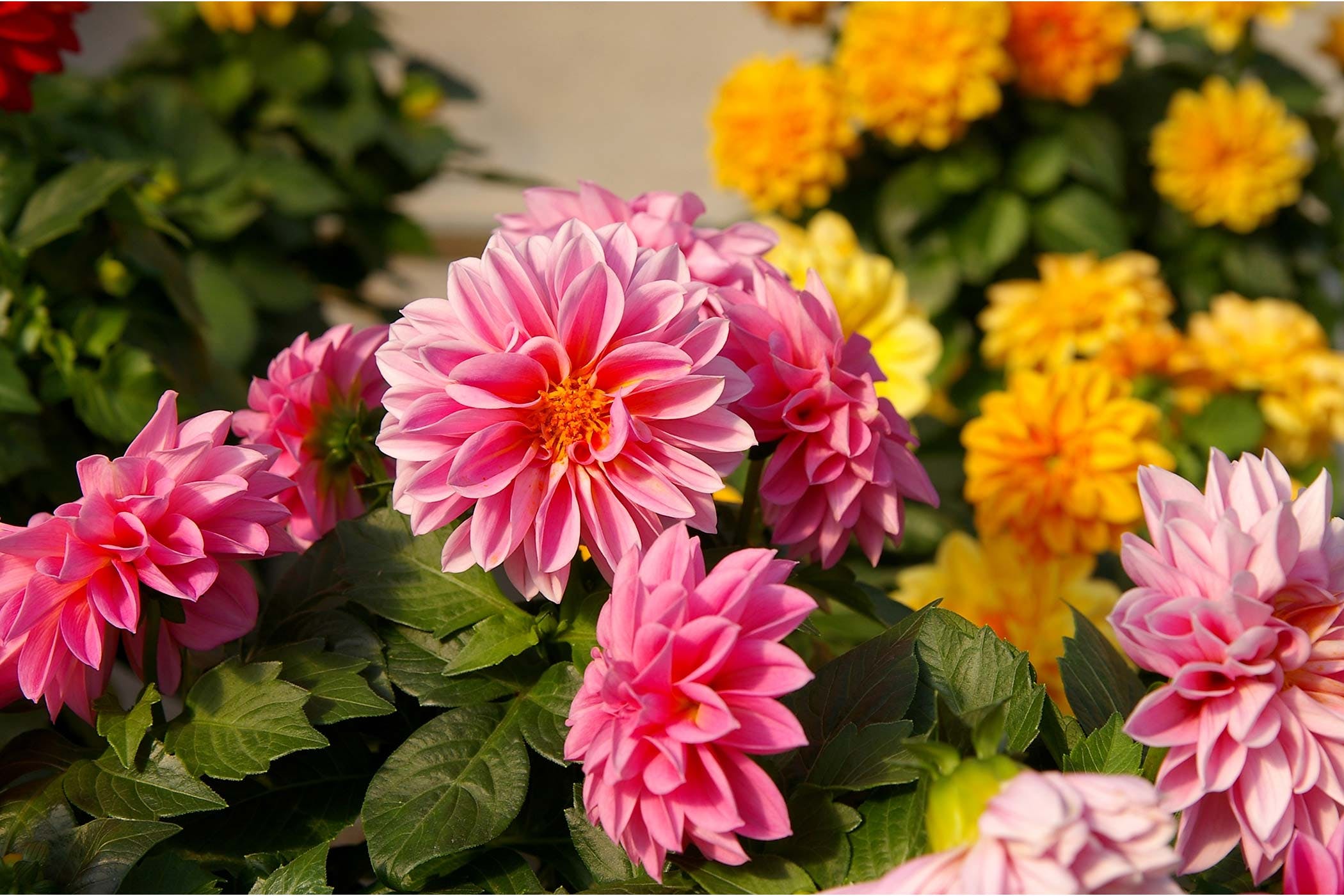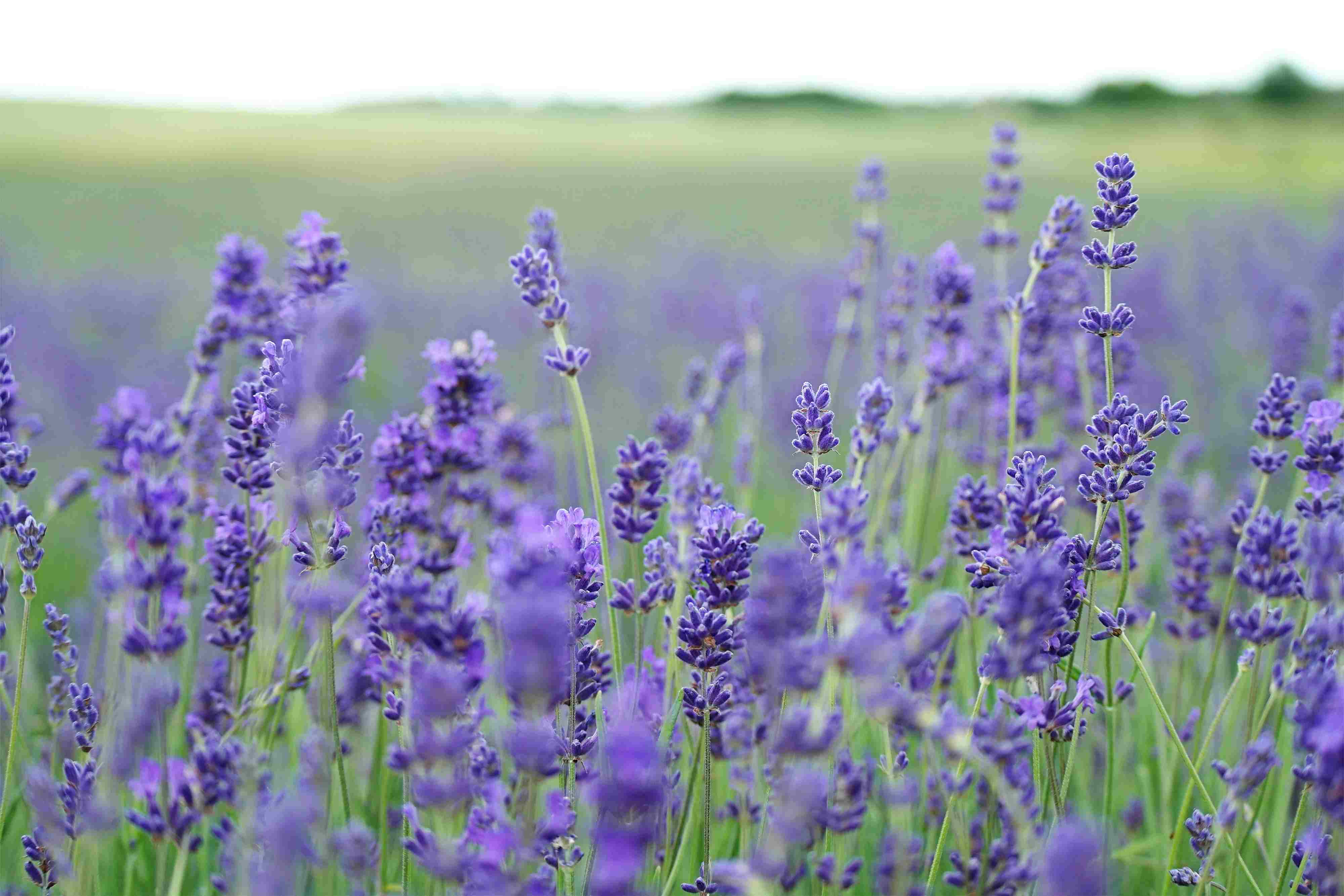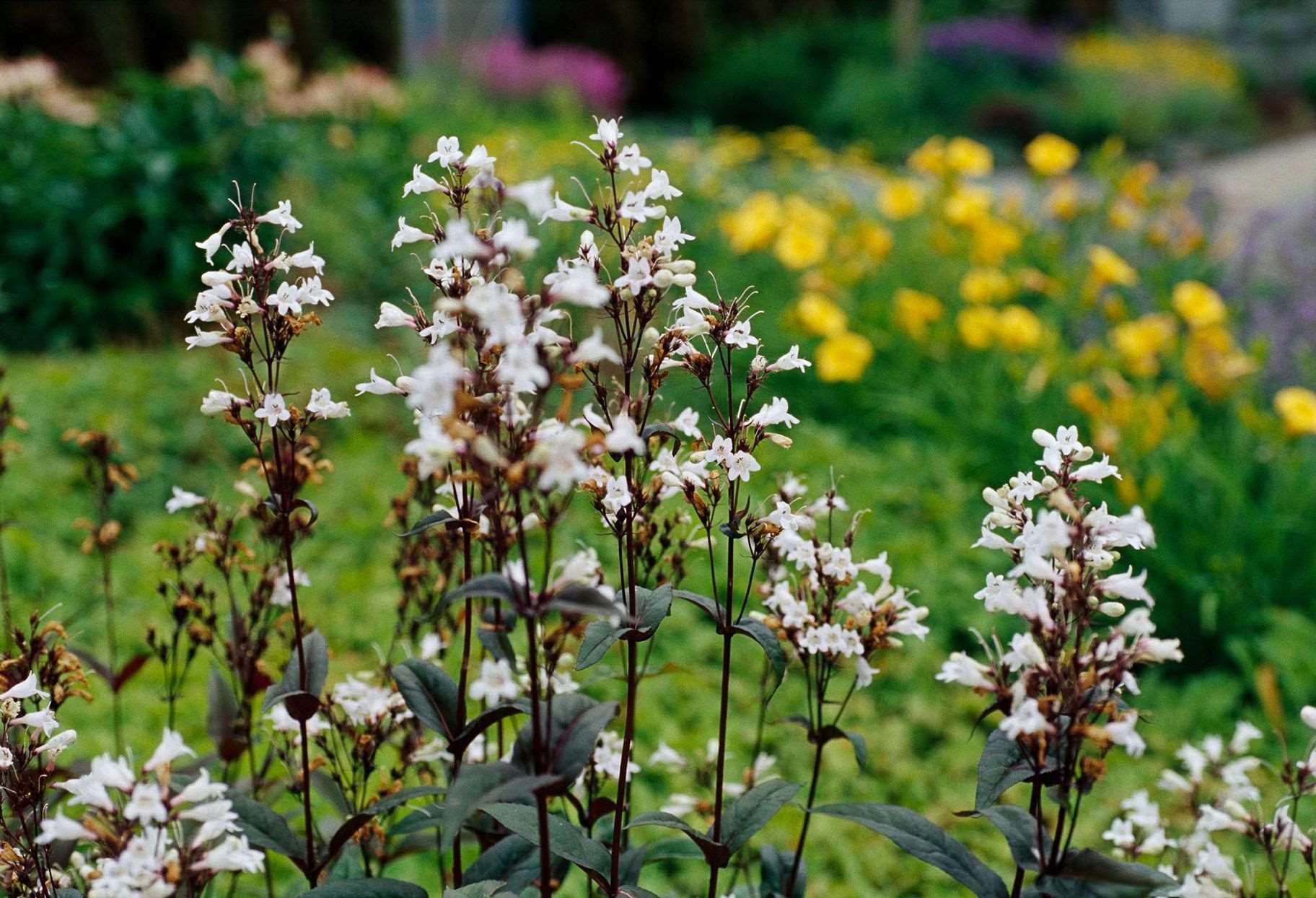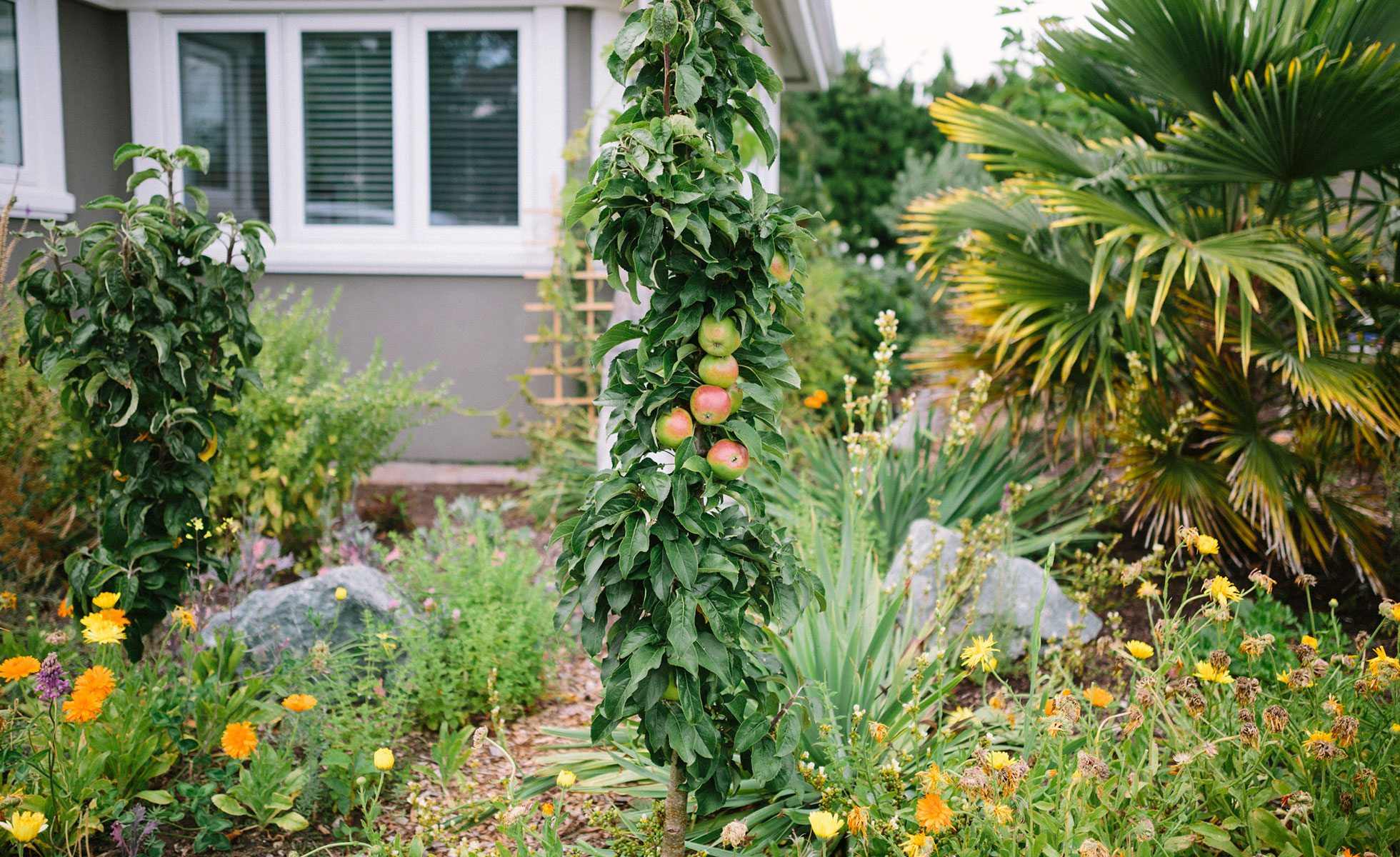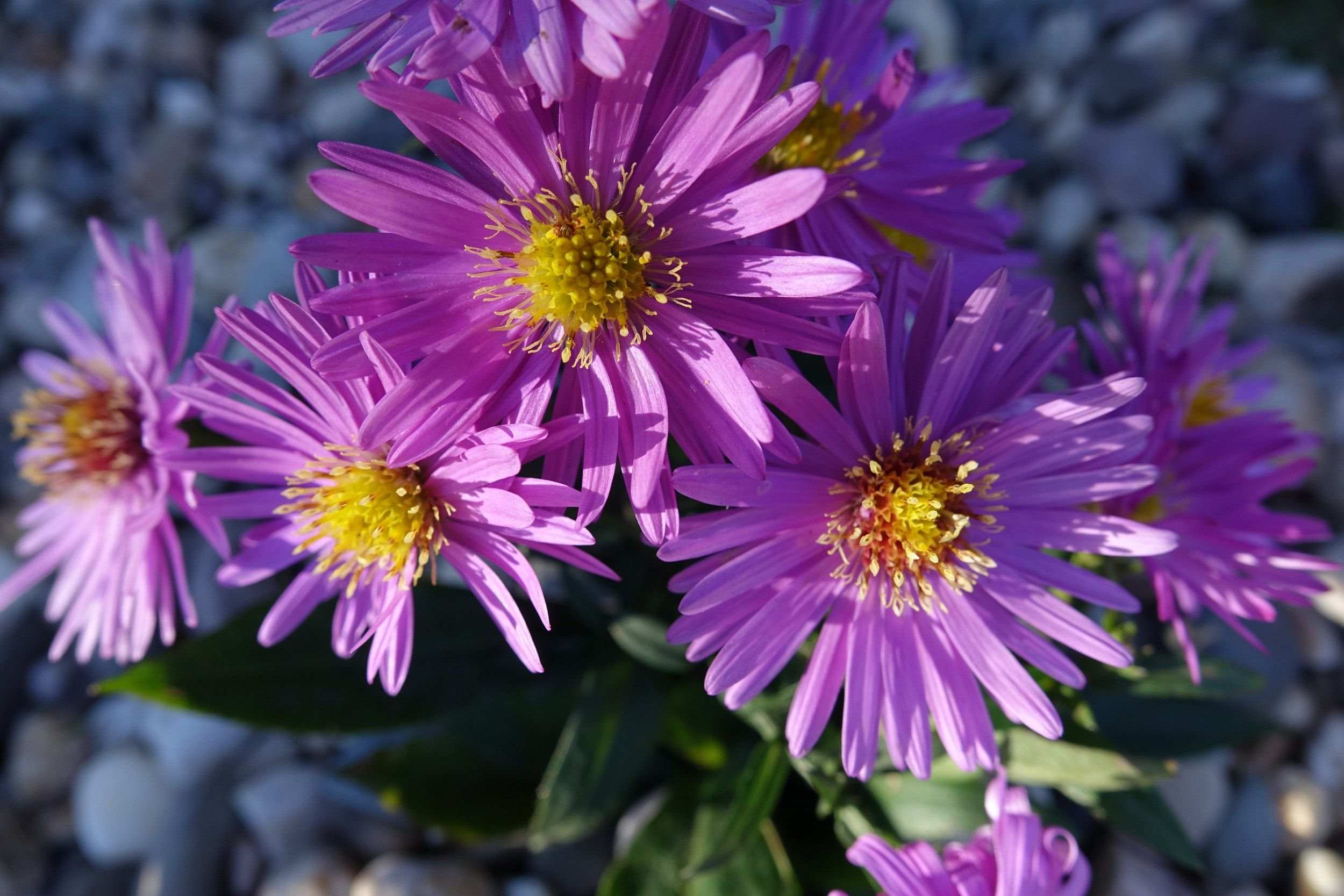Home>Gardening Techniques>Plant Care>What Perennials Will Deer Not Eat
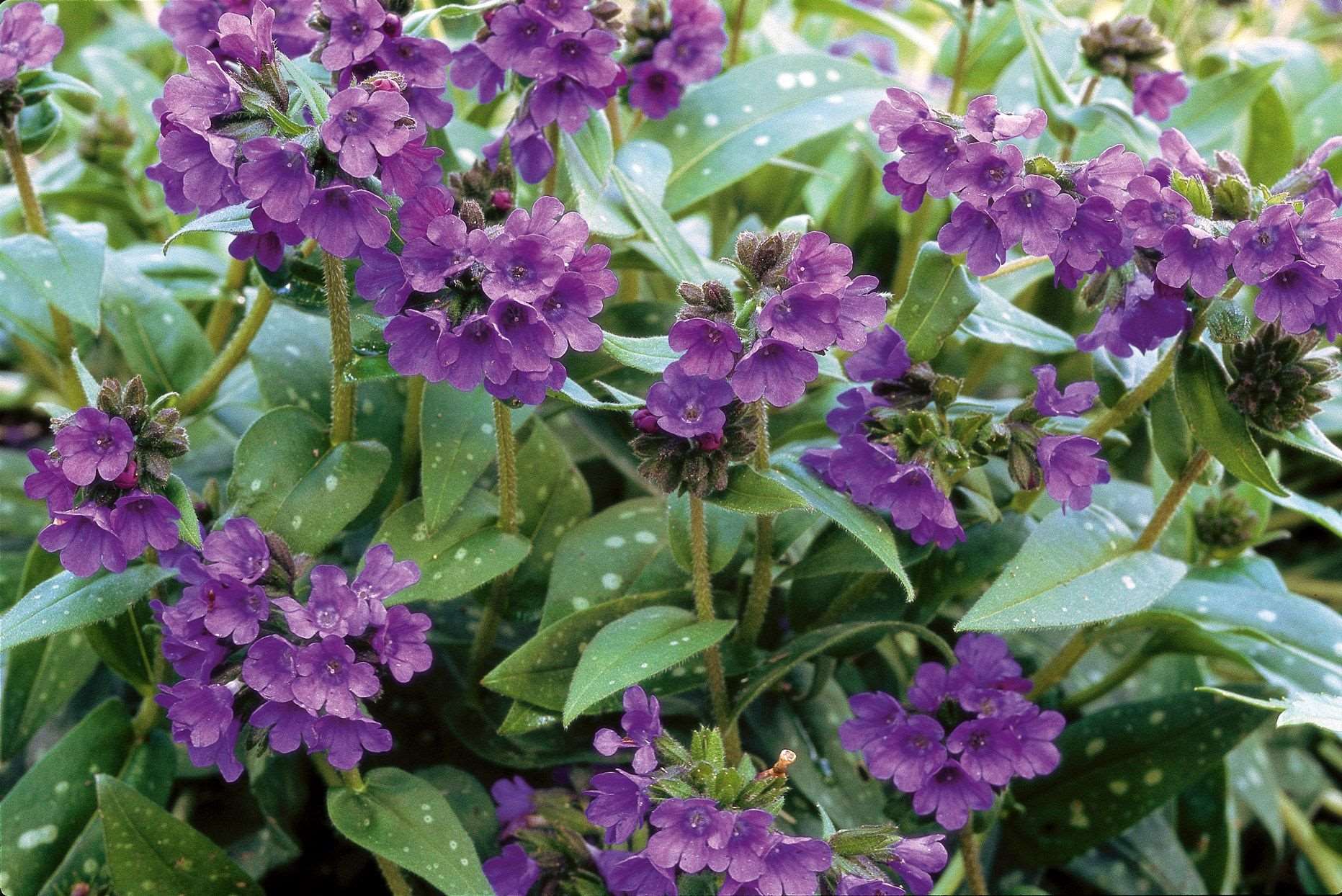

Plant Care
What Perennials Will Deer Not Eat
Modified: January 22, 2024
Discover which perennials are resistant to deer and learn how to care for them in your garden. Plant care tips to help keep your plants safe from deer grazing.
(Many of the links in this article redirect to a specific reviewed product. Your purchase of these products through affiliate links helps to generate commission for Chicagolandgardening.com, at no extra cost. Learn more)
Table of Contents
Introduction
Deer can be a frustrating pest for gardeners, often wreaking havoc on landscapes and devouring prized plants. However, with careful consideration and strategic planning, it is possible to create a beautiful garden that is less appealing to these graceful yet troublesome creatures. One effective approach is to incorporate deer-resistant perennials into your plantings.
Deer-resistant perennials are plants that have natural characteristics that deter deer from feeding on them. While no plant is completely immune to deer browsing, certain species have developed defense mechanisms that make them less palatable or simply unappealing to deer. By selecting these types of plants for your garden, you can increase the chances of keeping deer at bay and preserving the beauty of your landscape.
When selecting deer-resistant perennials, it is important to take into account a few key factors. First and foremost, consider your local deer population and their feeding habits. Deer preferences can vary from region to region, so it’s important to know which plants are more likely to be targeted. Additionally, factors such as the availability of other food sources, the season, and even the weather conditions can influence deer’s feeding behavior.
Another factor to consider is the level of deer-resistance for each plant. Some plants may have a higher level of resistance and are rarely eaten by deer, while others may have a lower level of resistance and may only be overlooked when other more desirable options are scarce. Be sure to choose plants with a higher level of resistance to maximize the effectiveness of your deer deterrent strategies.
In this article, we will explore a variety of deer-resistant perennials that you can incorporate into your garden. From flowers to ground covers and even herbs, these plants are known to be less attractive to deer and can help safeguard your landscape against their browsing habits. We will also provide some tips on how to deter deer from eating perennials, so you can enjoy your garden without the constant threat of deer damage. Let’s dive in and discover which plants can help keep those pesky deer at bay!
Factors to Consider when Choosing Deer-Resistant Perennials
When selecting deer-resistant perennials for your garden, there are several factors to consider to ensure the best chance of success in deterring deer. By being mindful of these factors, you can choose plants that are less likely to be a target for deer browsing.
Plant Toxicity: Some plants have natural toxins or bitter tastes that make them unappealing to deer. These plants can act as a natural deterrent, as deer generally avoid consuming plants that may be harmful to them. Examples of deer-resistant perennials with toxic or bitter properties include foxglove (Digitalis), monkshood (Aconitum), and yarrow (Achillea).
Fragrance and Texture: Deer are attracted to plants with tender, succulent foliage, and aromatic flowers. Choosing perennials with strong fragrances or coarse, fuzzy, or spiky textures can help deter deer. Plants such as lavender (Lavandula), catmint (Nepeta), and Russian sage (Perovskia) have strong aromas that deer dislike, making them less likely to browse on these plants.
Flower Color: Surprisingly, the color of flowers can have an impact on deer feeding habits. Deer are less likely to be attracted to plants with bright, vibrant flower colors such as red, orange, and hot pink. Choosing perennials with flowers in these colors, such as daylilies (Hemerocallis), coreopsis (Coreopsis), or blanket flower (Gaillardia), can help deter deer from munching on your garden.
Native Plants: Native plants have evolved to thrive in specific regions and have natural defenses against local herbivores, including deer. These plants are often more resistant to browsing and can be a great option for deer-resistant perennials. Look for native species like black-eyed Susan (Rudbeckia), coneflower (Echinacea), and butterfly weed (Asclepias).
Height and Structure: Deer are more likely to feed on low-growing plants, as they are within easy reach. Choosing taller perennials can help reduce the risk of deer damage. Incorporating plants with upright growth habits, such as tall sedums (Sedum), ornamental grasses (Miscanthus), or hollyhocks (Alcea), can make it more challenging for deer to access the foliage.
By considering these factors when selecting deer-resistant perennials, you can create a well-rounded garden that is less appealing to deer. Remember, no plant is completely deer-proof, but by strategically choosing plants with these characteristics, you can significantly reduce the likelihood of deer damage. Now that we have explored the factors to consider, let’s delve into some specific deer-resistant perennials that you can incorporate into your garden.
Native Plants that Deer Typically Avoid
Native plants, which are species naturally found in a particular region, have developed defense mechanisms that make them less palatable to deer. These plants have adapted to the local environment and have evolved to withstand browsing by herbivores like deer. By incorporating native deer-resistant perennials into your garden, you can increase the likelihood of a successful, low-maintenance landscape.
Black-eyed Susan (Rudbeckia hirta): This North American native plant features bright yellow or orange flowers with a dark center. Black-eyed Susans are not only loved for their cheerful blooms but also favored for their deer resistance. Their rough and hairy leaves deter browsing, making them a reliable choice for deer-prone areas.
Butterfly Weed (Asclepias tuberosa): As the name suggests, butterfly weed attracts a variety of pollinators, including butterflies. However, deer tend to avoid this native perennial due to its sticky sap and the presence of toxins called cardiac glycosides. Its vibrant orange or yellow flowers provide a burst of color in the garden and help support native pollinators.
Wild Bergamot (Monarda fistulosa): Wild bergamot, also known as bee balm, is a native plant that produces clusters of pink or lavender flowers. Its strong minty fragrance and bitter taste make it unappealing to deer. Additionally, the plant’s tubular flowers are favored by hummingbirds and butterflies, making it a great addition to wildlife-friendly gardens.
Switchgrass (Panicum virgatum): Switchgrass is a native ornamental grass that deer tend to avoid. Its upright growth habit and coarse texture make it less appetizing for browsing. Switchgrass is valued not only for its deer resistance but also for its drought tolerance and attractive seed heads, which add interest to the winter landscape.
Blazing Star (Liatris spicata): Blazing star, also known as gayfeather, is a native perennial with tall spikes of purple or white flowers. This hardy plant is not a preferred food source for deer, possibly due to its bitter taste and tough, grass-like leaves. Its vibrant blooms make it a popular choice for pollinator gardens.
Virginia Bluebells (Mertensia virginica): Virginia bluebells are native wildflowers with clusters of bell-shaped, blue-pink blooms. The soft, fuzzy foliage and alkaloid compounds found in these plants make them less appealing to deer. Virginia bluebells thrive in shaded woodland areas and are an excellent choice for naturalizing in damp, rich soil.
These are just a few examples of native plants that deer typically avoid. There are many more options available, depending on your specific region and growing conditions. By incorporating these plants into your landscape, you can create a beautiful, deer-resistant garden that supports local biodiversity and helps maintain a healthy ecosystem.
Perennial Flowers that are Unattractive to Deer
When it comes to selecting perennial flowers for a deer-resistant garden, there are several species that deer tend to find unappealing. These flowers have characteristics that make them less attractive as food sources, helping to deter deer from browsing on your plants. Incorporating these deer-resistant perennial flowers into your garden can add beauty and color while reducing the risk of deer damage.
Lamb’s Ear (Stachys byzantina): With its velvety, silver-gray leaves, lamb’s ear is a visually striking perennial that deer tend to avoid. The fuzzy texture and slightly bitter taste of the foliage make it less palatable to deer. Lamb’s ear is also drought-tolerant and adds an interesting texture to borders and rock gardens.
Bearded Iris (Iris germanica): Bearded irises are known for their gorgeous blooms in various colors, including purple, yellow, and white. Fortunately, deer find the leaves and flowers of bearded irises unappetizing. These stunning perennials require well-drained soil and full sun to thrive, making them an excellent choice for many gardens.
Siberian Iris (Iris sibirica): Another type of iris that deer tend to avoid is the Siberian iris. This perennial features slender, grass-like leaves and elegant blue, purple, or white flowers. Siberian irises are relatively low-maintenance and can tolerate wetter soil conditions than their bearded counterparts, making them a versatile choice for various garden settings.
Bleeding Heart (Dicentra spp.): The delicate, heart-shaped flowers of bleeding hearts add a touch of romance to any garden. Fortunately, these plants have chemicals that give them a bitter taste, making them less attractive to deer. Bleeding hearts prefer partial shade and moist, well-draining soil, making them an ideal choice for woodland gardens.
Bee Balm (Monarda didyma): Bee balm, also known as bergamot, boasts vibrant blossoms in colors like red, pink, and purple. The intense aroma and strong flavor of its leaves and flowers discourage deer from feeding on this perennial. In addition to its deer resistance, bee balm is a magnet for pollinators, making it a valuable addition to wildlife gardens.
Salvia (Salvia spp.): The wide range of salvias available, including the popular Salvia nemorosa and Salvia officinalis, are generally unattractive to deer. These perennials produce lovely spikes of flowers in various colors, such as blue, purple, pink, and red. Salvias thrive in well-draining soil and full sun, making them versatile additions to garden borders.
These are just a few examples of perennial flowers that deer find unattractive. However, it’s important to note that no plant is completely deer-proof, and individual deer feeding habits can vary. By incorporating a diverse selection of these deer-resistant perennials into your garden, you can increase the likelihood of deterring deer and enjoy a beautiful, blooming landscape.
Deer-Resistant Ground Covers
Ground covers play an essential role in landscaping by filling in gaps, suppressing weeds, and providing a lush carpet of foliage. When it comes to deer-resistant gardens, choosing the right ground covers can help protect your landscape from browsing deer while creating a visually appealing and low-maintenance garden. Here are some deer-resistant ground covers to consider:
Creeping Thyme (Thymus spp.): Creeping thyme is a low-growing ground cover with small, aromatic leaves and tiny flowers in shades of pink, purple, or white. This plant releases a delightful fragrance when stepped on or brushed against, which deer find unappealing. Creeping thyme is also drought-tolerant and ideal for planting in rock gardens or along walkways.
Periwinkle (Vinca minor): Periwinkle, also known as vinca, is a popular ground cover with trailing stems and glossy green leaves. It features delicate blue or purple flowers in the spring. The slightly bitter taste and toxic compounds found in periwinkle make it unpalatable to deer. This ground cover is an excellent choice for shaded areas and can help prevent erosion on slopes.
Japanese Spurge (Pachysandra terminalis): Japanese spurge is a dense, evergreen ground cover that forms a mat of dark green, leathery leaves. Its ability to thrive in shade and partial shade makes it a valuable option for underplanting trees and shrubs. Deer typically avoid feeding on Japanese spurge, thanks to its tough foliage and strong odor when crushed.
Dead Nettle (Lamium maculatum): Dead nettle is a ground cover that offers attractive foliage in shades of green, silver, or variegated. It produces clusters of purple, pink, or white flowers in the spring and early summer. Dead nettle contains chemicals that give it a bitter taste, making it less appealing to deer. It is well-suited for shady areas and can be a colorful addition to woodland gardens.
Barren Strawberry (Waldsteinia ternata): Barren strawberry is a low-maintenance ground cover with glossy, trifoliate leaves that resemble those of common strawberry plants. It produces bright yellow flowers in spring and early summer. Despite its name, barren strawberry is not a true strawberry and is not attractive to deer. This ground cover is suitable for sun to partial shade, making it versatile for various garden settings.
Brass Buttons (Leptinella squalida): Brass buttons, also known as cotula, is a unique ground cover with fern-like foliage that forms dense mats. It thrives in full sun to light shade and produces small, button-like yellow flowers. The strong aroma and taste of brass buttons deter deer from feeding on this ground cover. It is drought-tolerant and can add interest to rock gardens or between stepping stones.
These deer-resistant ground covers not only provide visual interest and fill in bare areas but also offer protection against deer damage. Remember that individual deer feeding habits can vary, and no plant can guarantee complete deer resistance. It is always a good idea to monitor the deer activity in your area and use a combination of deer deterrent strategies to protect your garden.
Deer-Resistant Perennial Herbs
Perennial herbs not only add aromatic fragrances and culinary value to your garden but can also serve as deer-resistant plants. These herbs possess characteristics that make them unattractive to deer, allowing you to enjoy their beauty and benefits without worrying about deer damage. Here are some deer-resistant perennial herbs to consider planting:
Lavender (Lavandula spp.): Lavender is a versatile herb known for its calming aroma and beautiful purple, pink, or white flowers. The strong fragrance of lavender is disliked by deer, making it an excellent deer-resistant perennial herb. Lavender prefers well-draining soil and full sun, making it ideal for borders, herb gardens, and rock gardens.
Rosemary (Rosmarinus officinalis): Rosemary is a woody perennial herb with needle-like leaves and small blue or purple flowers. Its strong resinous fragrance and tough, aromatic leaves deter deer from feeding on it. Rosemary thrives in well-draining soil and full sun, making it a great addition to herb gardens, containers, or as a fragrant hedge.
Thyme (Thymus spp.): Thyme is a low-growing perennial herb with small leaves and delicate flowers in shades of white, pink, or purple. Its strong scent and slightly bitter taste make it less appealing to deer. Thyme varieties, such as creeping thyme and lemon thyme, are excellent choices for ground covers, container gardens, and rock gardens.
Mint (Mentha spp.): Mint is a fast-growing herb with a refreshing aroma and a tendency to spread rapidly. While it can be invasive in some garden settings, mint’s strong scent makes it unpalatable to deer. Growing mint in pots or planting it in contained areas can help control its spread. Mint varieties like spearmint and peppermint are well-suited for teas, culinary uses, and as borders in herb gardens.
Sage (Salvia officinalis): Sage is a hardy perennial herb with fuzzy, gray-green leaves and attractive purple or blue flowers. The strong aroma and slightly bitter taste of sage leaves deter deer from browsing. Sage is drought-tolerant and thrives in full sun, making it a valuable addition to herb gardens, ornamental beds, and container plantings.
Oregano (Origanum spp.): Oregano is a flavorful herb with small leaves and clusters of pink or purple flowers. The strong scent and taste of oregano make it less appealing to deer. It is a versatile herb that can be used in a variety of culinary dishes. Oregano prefers well-draining soil and full sun, making it a popular choice for herb gardens, borders, and containers.
With these deer-resistant perennial herbs in your garden, you can enjoy the benefits of their fragrance, flavor, and beauty while minimizing the risk of deer damage. Remember to plant herbs in locations that receive the appropriate sunlight and provide well-draining soil. Regular pruning and harvesting of herbs will not only keep them in shape but can also enhance their aroma and flavor.
Ways to Deter Deer from Eating Perennials
While selecting deer-resistant perennials is a crucial step in protecting your garden, it’s also essential to employ additional strategies to deter deer from eating your plants. By implementing these methods, you can create a more effective barrier and increase the chances of keeping deer away from your precious perennials:
Fencing: Installing a sturdy fence around your garden is one of the most effective ways to keep deer out. Opt for a fence that is at least 8 feet tall, as deer are skilled jumpers. Ensure the fence is securely attached to the ground to prevent deer from squeezing underneath. Regularly check for any gaps or damages in the fence and repair them promptly.
Repellents: Utilize commercial deer repellents or create homemade deterrent sprays to make your plants taste or smell unappealing to deer. These repellents often contain strong odors, such as garlic, hot pepper, or predator urine, which can discourage hungry deer. Apply the repellents according to the instructions and reapply after rain or watering.
Scare Tactics: Implement scare tactics to startle deer and discourage them from venturing into your garden. Hang wind chimes or bells around your garden to create noise when the wind blows. Use motion-activated sprinklers or flashing lights to startle deer when they approach your plants. Change the location and timing of scare devices periodically to prevent deer from getting accustomed to them.
Plant Selection: Continuously diversify your garden with a combination of deer-resistant plants and those that are unappealing to deer. Including plants with strong scents, prickly textures, or bitter tastes can help deter deer. Mixing different plant varieties and heights can also make it more challenging for deer to access specific plants within your garden.
Physical Barriers: Protect vulnerable individual plants by using physical barriers, such as wire mesh or netting. Create cages or enclosures around plants that are particularly attractive to deer. This method is especially useful for young or newly planted perennials that are more susceptible to deer damage.
Companion Planting: Consider companion planting with herbs and flowers that naturally repel deer. For instance, interplanting strong-smelling herbs like rosemary, thyme, or sage among susceptible perennials can help mask their scent and deter deer. Additionally, some flowers, such as marigolds or daffodils, are known to repel deer and can be strategically placed around your garden.
Garden Maintenance: Regularly maintain your garden by removing fallen fruit, debris, and weeds that can attract deer. By eliminating food and hiding spots, you make your garden less inviting to deer. Prune low branches on trees and shrubs to prevent deer from accessing your garden from above.
By employing a combination of these methods, you can create a more effective deterrent system to protect your perennials from deer. Remember that no method is foolproof, and it may take trial and error to find the best combination of strategies for your specific garden and deer population. Consistency and vigilance are key to successfully warding off these hungry garden invaders.
Conclusion
Creating a deer-resistant garden is a task that requires careful planning, selection, and implementation of various strategies. By choosing deer-resistant perennials, native plants, unappetizing flowers, and herbs, you can significantly reduce the risk of deer damage in your landscape. Consider the factors that deter deer, such as plant toxicity, fragrance, texture, and flower color, to make informed choices.
In addition to plant selection, employing effective deterrent methods like fencing, repellents, scare tactics, and physical barriers can further protect your perennials from deer browsing. Regular garden maintenance and companion planting can also contribute to the overall success of your deer-resistant garden. Remember to stay vigilant and adjust your approach as needed to keep deer at bay.
While no plant is entirely deer-proof, the combination of smart plant choices and deterrent strategies will greatly increase your chances of enjoying a beautiful, thriving garden. The effort put into creating a deer-resistant garden is well worth it, as it allows you to protect your investments, preserve the beauty of your landscape, and enjoy the rewards of your hard work without constant worry about deer damage.
So, take the time to research, plan, and carefully select the right deer-resistant perennials for your garden, incorporating native plants and unattractive varieties. Implement various deterrent methods and maintain your garden to create an environment that is less appealing to deer. With persistence and creativity, you can create a stunning, deer-resistant garden that brings you joy and peace of mind for years to come.
